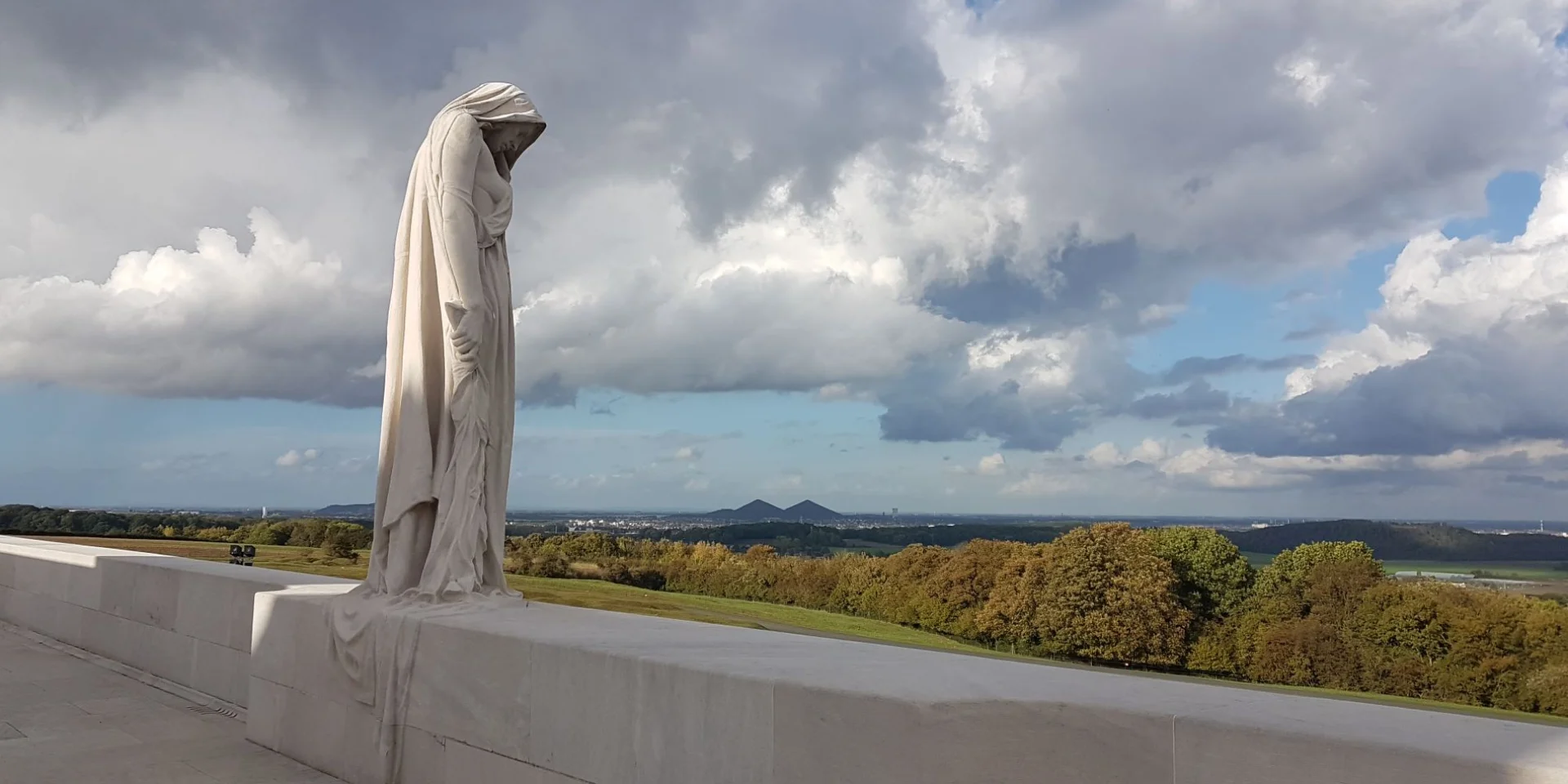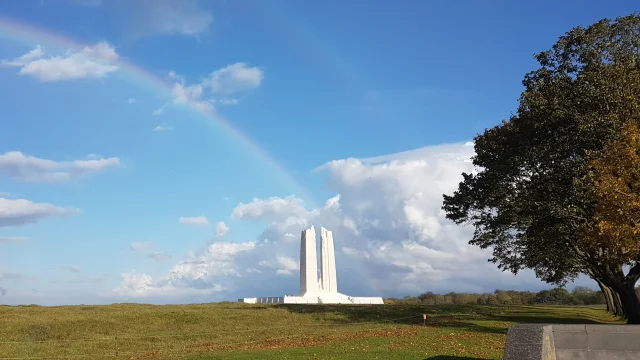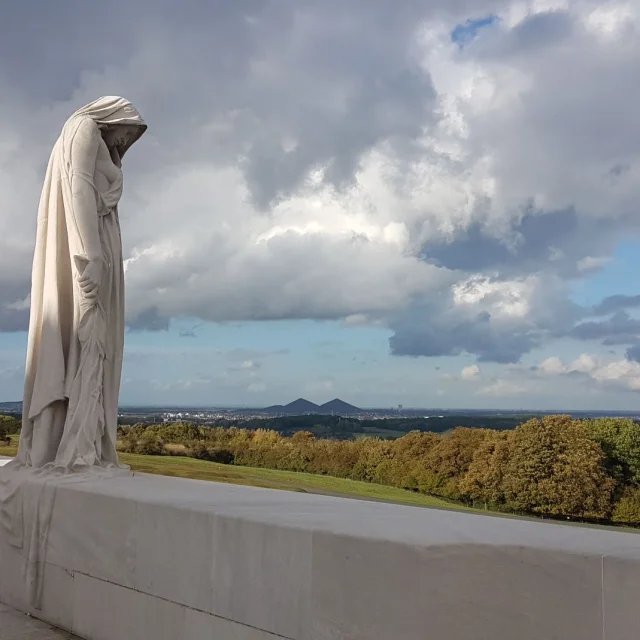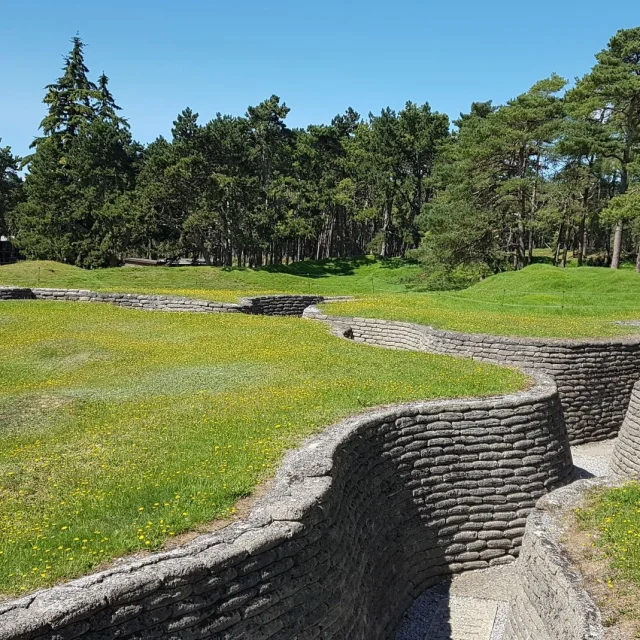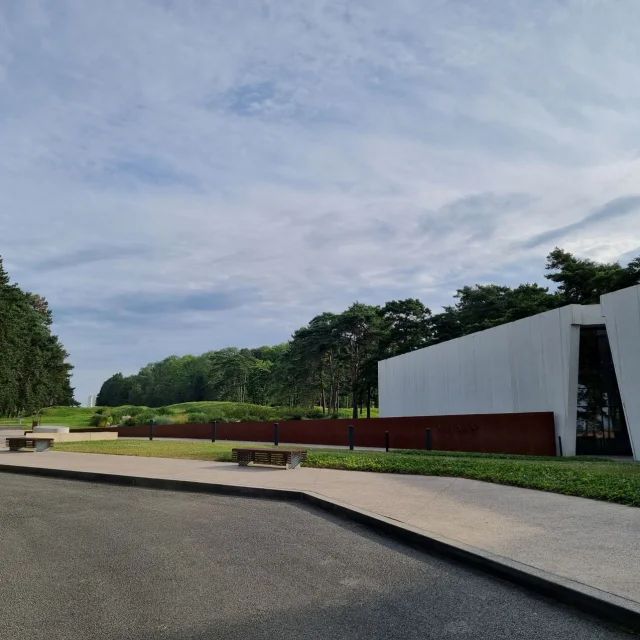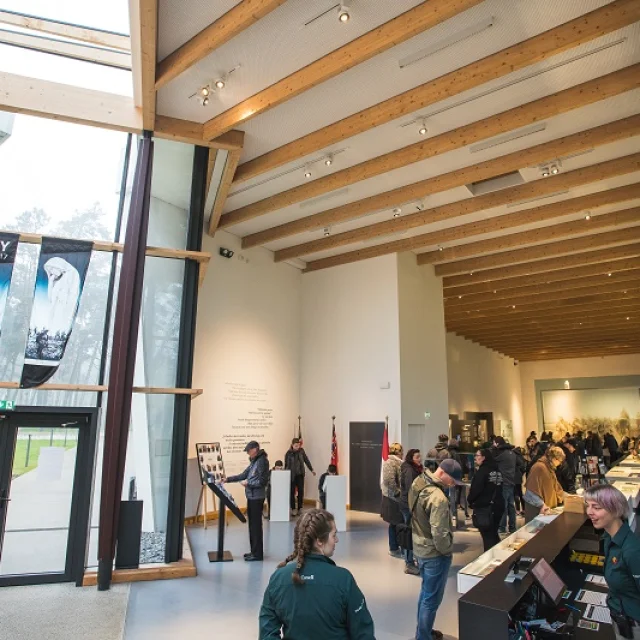Officially known as the Canadian National Historic Site of Vimy Ridge, the memorial sits on a 107-hectare plot, much of which has been carefully reforested. This landscape, both scarred and serene, invites reflection on the enormous cost of the war — a war in which over 60,000 Canadians gave their lives.
The Vimy Memorial marks the site of the Battle of Vimy Ridge, fought from April 9 to 12, 1917. It was here that Canadian forces, fighting together for the first time as a unified corps, achieved a remarkable victory. On April 10, Canadian divisions secured the ridge, breaking through the German lines and helping liberate Arras, which had remained under constant fire. This was one of the few clear Allied victories on the Western Front before 1918.
The memorial does more than commemorate military success — it honours the fallen, the wounded, and all those whose lives were changed by the war. It stands as a national gesture of gratitude, sorrow, and unity.
 Close-up of Vimy’s carved figures — grief in stone
Close-up of Vimy’s carved figures — grief in stone Panorama of Vimy Ridge battlefield with grazing sheep
Panorama of Vimy Ridge battlefield with grazing sheep